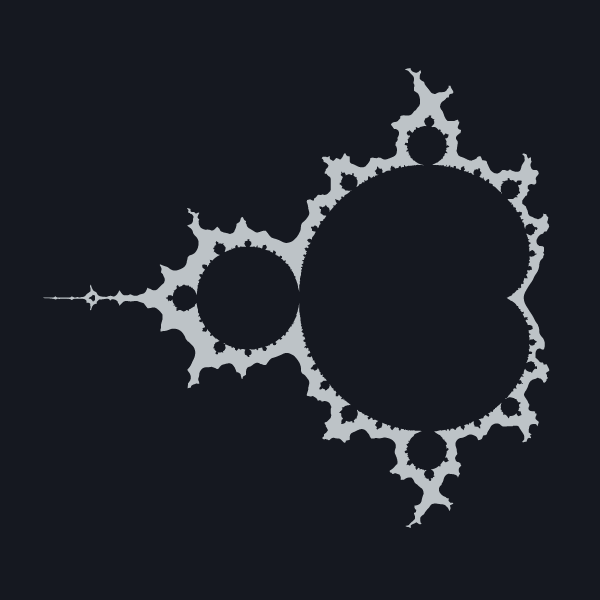mandelb.wat is a real-time interactive explorer of the 4D Mandelbrot set, written in WAT (WebAssembly Text format). WebAssembly is a recent technology that enables the writing of more efficient browser applications, and though many programming languages can compile to it, few people write in the WAT format directly.
Though there are various Mandelbrot renderers online, this is, to my knowledge, the first online highly-performant renderer, providing real-time interactivity to a general audience. The Mandelbrot set is a fascinating fractal with many deep mathematical connections, and being able to interact with it in all four dimensions reveals beautiful patterns and structures that one could not find otherwise.
Project README
Drag to move, scroll to scale, right-click drag to rotate. Press r to reset.
Black points correspond to points in the Mandelbrot set, and bright points denote points almost in the Mandelbrot set. As you zoom in, the colors are dynamically adjusted to reveal fine detail that would otherwise be lost.
By default, the left pane shows the xy-plane, which is the canonical Mandelbrot set, and the right pane shows the zw-plane, which corresponds to the canonical Julia sets. Translating in the left pane results in different Julia sets on the right.
As each pane shows two orthogonal planes from the 4D space, only one point is shown in both panes simultaneously, and is located at the center of each pane. Thus, translating in the left pane changes the xy-coordinates of the center point, causing the right plane to show the corresponding zw-plane. Conversely, translating in the right pane changes the zw-coordinates of the center point, causing the left plane to the corresponding xy-plane.
Rotating the space causes the two panes to show different cross-sections of the Mandelbrot set. Rotations in 4D happen within planes[1] (similar to a 2D rotations). In 4D, you can rotate in 6 independent planes. The viewer allows you to rotate in 4[2]. To rotate in the...
- xz-plane: drag horizontally on the left pane
- yw-plane: drag vertically on the left pane
- zy-plane: drag horizontally on the right pane
- wx-plane: drag vertically on the right pane
The core calculations are implemented in hand-written WAT (WebAssembly Text format), which transpiles to WASM. The WAT takes:
- the 4D coordinates of the center point
- the 4D orientation
- the scale factor
- the output dimensions
Using these, it calculates for each point in the view whether they are in or close to the set, and from this writes an image into its memory.
A frontend written in TypeScript calls the WASM in Web Workers to parallelize the rendering across many threads and render the image onto the screen.
Due to the highly complex fractal nature of the set, there are at times sections that look like rendering errors, but are faithful depictions of the true structure. This can often be verified by zooming in on points and observing further fractal detail, as expected. Various viewpoints have been checked against other renderings of the Mandelbrot set, and all have aligned correctly. At first, many angled views may seem very non-intuitive, but with continued exploration, one can notice patterns and consistencies.
1. Really, all rotations happen within planes. It's just that in 3D, it's natural to rotate around the axes (orthogonal lines). In 4D, you could also represent the rotations orthogonally, but then rotations would happen around orthogonal planes. Rotation within planes is more intuitive, as you can just ignore the orthogonal dimensions.
2. You can't directly rotate in the two planes actively visible to you, unless you tilt your head.
